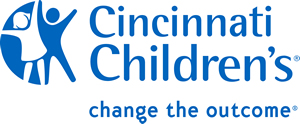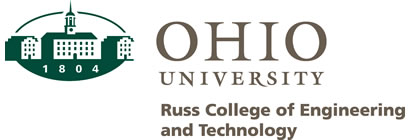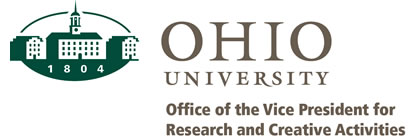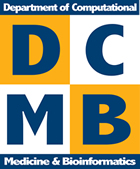Great Lakes Bioinformatics Conference 2014
SPEAKERS
Updated May 12, 2014
 Gary Bader, Associate Professor
Gary Bader, Associate Professor
The Donnelly Centre at the University of Toronto
http://baderlab.org/GaryBader
 Tanya Y. Berger-Wolf, Associate Professor
Tanya Y. Berger-Wolf, Associate Professor
Department of Computer Science
, University of Illinois
http://compbio.cs.uic.edu/~tanya
 Charles Brooks, Warner-Lambert/Park-Davis Professor of Chemistry
Charles Brooks, Warner-Lambert/Park-Davis Professor of Chemistry
Professor of Biophysics
University of Michigan
http://brooks.chem.lsa.umich.edu/index.php?page=charles_l._brooks_iii&subdir=articles/group Michael Hawrylcz, Investigator, Allen Institute for Brain Science
Michael Hawrylcz, Investigator, Allen Institute for Brain Science
www.alleninstitute.org/about_us/staff/michael_hawrylycz.html
 Anthony Philippakis is a physician, geneticist and mathematician. He is a fellow in cardiology at Brigham and Women’s Hospital, and in medical genetics at Harvard Medical School. He has published more than 20 papers on topics ranging from pure mathematics to personalized medicine. He is most passionate about translating the insights of the Human Genome Project to clinical medicine.
Anthony Philippakis is a physician, geneticist and mathematician. He is a fellow in cardiology at Brigham and Women’s Hospital, and in medical genetics at Harvard Medical School. He has published more than 20 papers on topics ranging from pure mathematics to personalized medicine. He is most passionate about translating the insights of the Human Genome Project to clinical medicine.
Anthony has a B.S. in mathematics from Yale University, where he graduated summa cum laude and Phi Beta Kappa. He studied pure mathematics at Cambridge University as an Ehrman Scholar, followed by an M.D. and a Ph.D. in biophysics at Harvard Medical School. He completed his residency in internal medicine at Brigham and Women’s Hospital in 2011.
GLBIO 2014 will feature dynamic tutorial sessions led by proven industry experts on Friday, May 16. Tutorial descriptions will be posted as they become available.
1. Lincs Chemical Biology Data Analysis Workshop
Mario Medvedovic
2. STOCHASTIC CHEMICAL KINETICS: Theory and Systems Biological Applications
Péter Érdi1,2 - 1: Henry Luce Professor of Complex System Studies: Center for Complex Systems Studies, Kalamazoo College, and
2: Wigner Research Centre for Physics, Hungarian Academy of Sciences, Budapest
Randomness is inherent in many biological systems. The source ofthis randomness is many times can be uncovered by understanding the mechanisms of the underlying biochemical reactions. The tutorial explains the mathematical framework and system biological applications of stochastic models of chemical kinetics and it is based on the book Stochastic Chemical Kinetics.
3. Methods and Approaches for the Analysis of Gene Signaling Pathways and Disease Gene Ranking and Systems Genetics Expression Mutation
Sorin Draghici, Professor, Computer Science, College of Engineering, Wayne State University
Anil Jegga, Assistant Professor, UC Department of Pediatrics, Cincinnati Childrens Medical Center
Part 1 – Session Summary: Methods and Approaches for the Analysis of Gene Signaling Pathways – Coming soon!
Part 2 – Session Summary - Disease Gene Ranking - Disease gene ranking using computational approaches narrows down and arranges the set of candidate genes for further experimental validation in the order of likelihood in disease involvement. The gene rank is assigned by considering a set of relevant features such as biological function, pathway association, gene expression, phenotype, protein interactions, etc. In this tutorial, we will go over some of the data sources and computational approaches used for disease gene ranking.
4. Disease Gene Ranking and Gene Networks and Systems Genetics Expression Mutation
Sorin Draghici and Anil Jegga
5. Introduction to Bioinformatics
Jarek Meller, Associate Professor, UC Department of Pediatrics,
Cincinnati Childrens Medical Center
Mike Raymer, Associate Professor, Department of Computer Science & Engineering,
Wright State
Session Summary: Interrogating biological systems with deep sequencing and bioinformatics - Challenges, algorithmic solutions, existing software pipelines and open computational problems related to the use of current sequencing techniques in the context of transcriptional profiling, sequence variant identification, as well as related applications, will be introduced at a level appropriate for undergraduate/graduate students entering the field.
6. Synapse - Sage Bionetworks Cloud Infrastructure for Data Analysis
Larsson Omberg
7. canvasXpress: A Highly Interactive JavaScript Library for Analytic Visualization of Genomics Data
Isaac Neuhaus, Dermatologic surgeon, Dermatologic Surgery and Laser Center,
University of California at San Francisco
CanvasXpress was developed as the core visualization component for bioinformatics and systems biology analysis at Bristol-Myers Squibb. It supports a large number of visualizations to display scientific and non-scientific data which includes: Area, Area-Line, Bar, Bar-Line, Boxplot, Candlestick, Circular, Correlation, Dotplot, DotLine, Genome, Heatmap, Histogram, Line, Network, Pie, Scatter2D, Scatter3D, ScatterBubble2D, Stacked, Stacked-Line, Stacked-Percent, Stacked-Percent-Line, Treemap, Venn and Video. CanvasXpress also includes a standalone unobtrusive data table and a filtering widget to allow data exploration similar to those only seen in other high-end commercial applications. Data can be easily sorted, grouped, transposed, transformed or clustered dynamically. The fully customizable mouse events as well as the zooming, panning and drag'n drop capabilities are features that make this library unique in its class.




